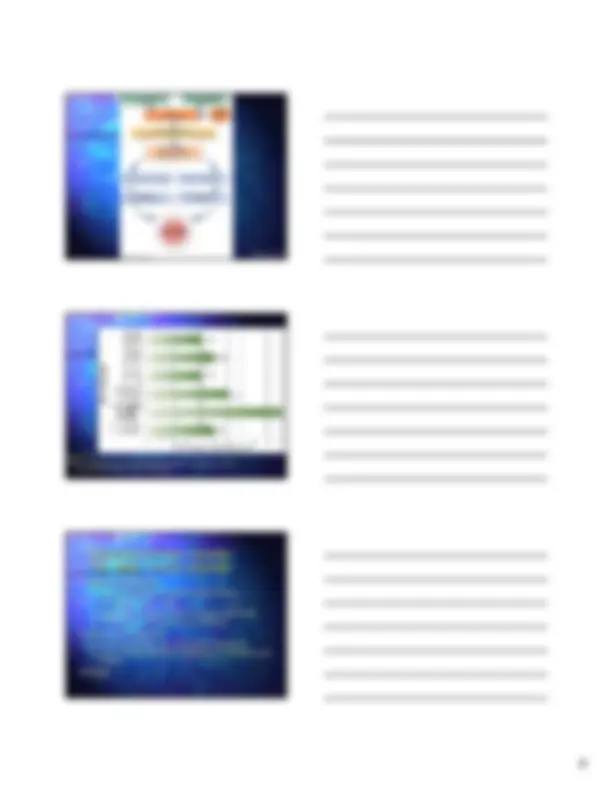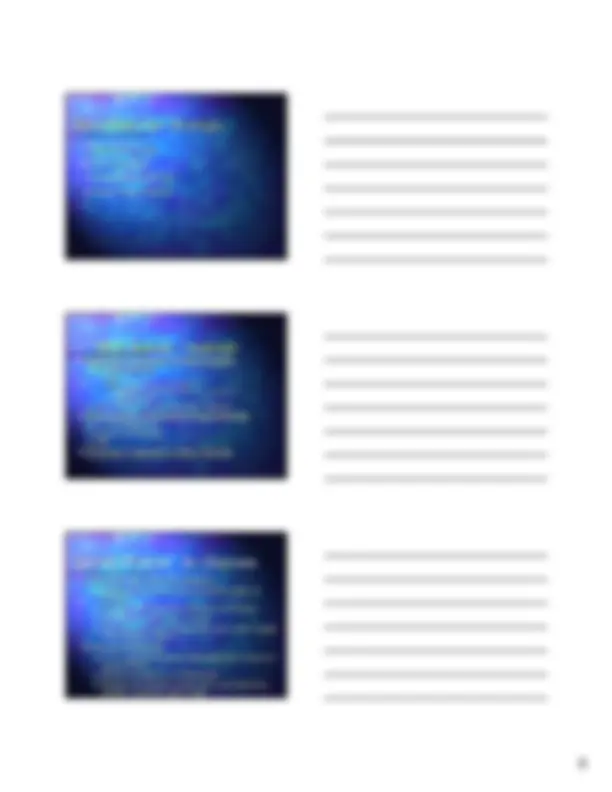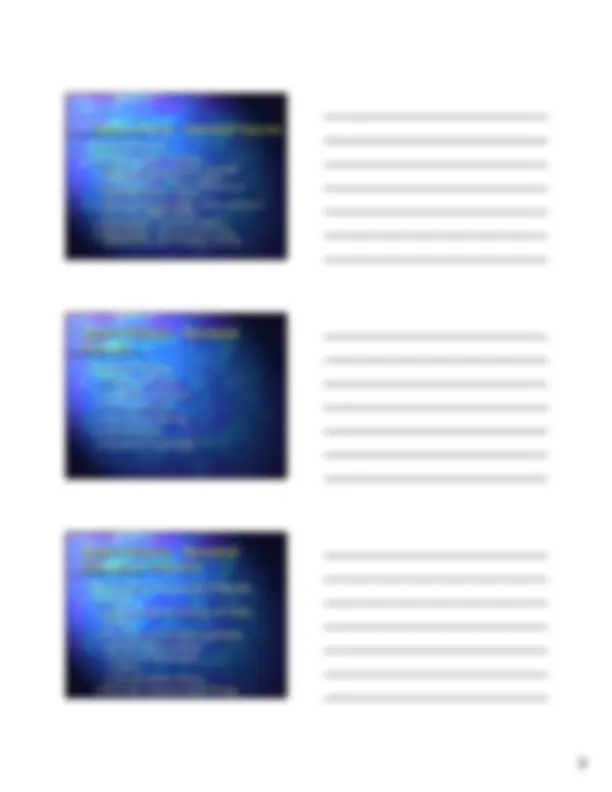











Study with the several resources on Docsity

Earn points by helping other students or get them with a premium plan


Prepare for your exams
Study with the several resources on Docsity

Earn points to download
Earn points by helping other students or get them with a premium plan
Community
Ask the community for help and clear up your study doubts
Discover the best universities in your country according to Docsity users
Free resources
Download our free guides on studying techniques, anxiety management strategies, and thesis advice from Docsity tutors
The effects of climate change on agricultural productivity, focusing on extreme weather events, changing precipitation patterns, and the potential for adaptation strategies. It provides insights into the challenges farmers face in adapting to these changes and the role of scientific research in developing sustainable agricultural practices.
Typology: Study notes
1 / 17

This page cannot be seen from the preview
Don't miss anything!










Panic Panic
(^) PanicPanic
Sudden & unexpected fight/flightSudden & unexpected fight/flight responseresponse
Absence of obvious danger or threatAbsence of obvious danger or threat
(^) Anxiety, Fear & Panic are NormalAnxiety, Fear & Panic are Normal
Emotional StatesEmotional States
Components of AnxietyComponents of Anxiety
Response SystemsResponse Systems
PhysicalPhysical
Fight/flight responseFight/flight response
CognitiveCognitive
Attentional shiftAttentional shift & hypervigilance,& hypervigilance, nervousness, difficulty concentratingnervousness, difficulty concentrating
(^) BehavioralBehavioral –– aggression and/oraggression and/or avoidanceavoidance
Common Fears Common Fears
(Adapted from Mash, & Wolfe, 2002, p 166)(Adapted from Mash, & Wolfe, 2002, p 166)
Fig. 4.4, p. 134
Figure 5.3Figure 5. ClientsClients’’ answers to intervieweranswers to interviewer’’s question,s question, ““Do you worryDo you worry excessively about minor things?excessively about minor things?””
Generalized Anxiety Disorder:Generalized Anxiety Disorder:
TheThe ““BasicBasic”” Anxiety DisorderAnxiety Disorder
4% of the general population meet criteria4% of the general population meet criteria Females 2:1 over malesFemales 2:1 over males Onset often insidious, beginning early adulthoodOnset often insidious, beginning early adulthood ^ Tendency to be anxious runs in familiesTendency to be anxious runs in families
Persons with GADPersons with GAD areare ““autonomic restrictorsautonomic restrictors”” (^) Fail to process emotional component of thoughts andFail to process emotional component of thoughts and imagesimages
GAD: Etiology GAD: Etiology
(^) Three major contributorsThree major contributors
Often due to a single stressorOften due to a single stressor
GAD: Etiology GAD: Etiology
Severely stressful childhoodSeverely stressful childhood environments are associated withenvironments are associated with GADGAD
Multifaceted model of developmentMultifaceted model of development
GAD: Comorbid GAD:Comorbid DisordersDisorders
The development of GAD serves asThe development of GAD serves as a risk factor for the development ofa risk factor for the development of other psychological disordersother psychological disorders
CRITERIA FOR CRITERIA FOR PANIC ATTACKPANIC ATTACK Discrete period of intense fear or discomfortDiscrete period of intense fear or discomfort with 4 or more owith 4 or more off thethe symptoms below; symptoms develop abruptly & peak within 10 min.symptoms below; symptoms develop abruptly & peak within 10 min. && diminish within 30 minutediminish within 30 minute
Palpitations, pounding heart,Palpitations, pounding heart, or accelerated heart rateor accelerated heart rate ^ SweatingSweating Trembling or shakingTrembling or shaking Sensations of shortness ofSensations of shortness of breath or smotheringbreath or smothering Feeling of chokingFeeling of choking Chest pain or discomfortChest pain or discomfort ^ Chills or hot flushesChills or hot flushes (Based on DSM(Based on DSM--IVIV--TR, 2000 by APA)TR, 2000 by APA)
Nausea or abdominalNausea or abdominal distressdistress (^) Feeling dizzy, unsteady,Feeling dizzy, unsteady, lightheaded or faintlightheaded or faint Derealization orDerealization or depersonalizationdepersonalization (^) Fear of losing control orFear of losing control or going crazygoing crazy Fear of dyingFear of dying
Situations Avoided by People with Situations Avoided by People with
AgoraphobiaAgoraphobia
Shopping mallsShopping malls Cars (driver or passenger)Cars (driver or passenger) (^) BusesBuses TrainsTrains SubwaysSubways (^) Wide StreetsWide Streets TunnelsTunnels RestaurantsRestaurants TheatersTheaters Source:Source: Barlow & Durand, 2002, p. 124Barlow & Durand, 2002, p. 124
Being far from homeBeing far from home Staying at home aloneStaying at home alone ^ Waiting in lineWaiting in line SupermarketsSupermarkets StoresStores (^) CrowdsCrowds PlanesPlanes ElevatorsElevators EscalatorsEscalators
Panic Disorder:Panic Disorder:^ Associated FeaturesAssociated Features ^ Associated FeaturesAssociated Features
ComorbidityComorbidity
Panic Disorder: Etiology Panic Disorder: Etiology
(^) ConditioningConditioning
PersonalityPersonality
UncontrollabilityUncontrollability
Learning historyLearning history
Panic Disorder: TreatmentPanic Disorder: Treatment
(^) AntidepressantsAntidepressants TCAsTCAs (^) SSRIsSSRIs (e.g., Prozac and(e.g., Prozac and PaxilPaxil))
Cognitive TherapyCognitive Therapy CBTCBT
^ Extreme and irrational fear of a specific object orExtreme and irrational fear of a specific object or situationsituation Markedly interferes with one's ability to functionMarkedly interferes with one's ability to function Cues are environmental in natureCues are environmental in nature Recognize fears are unreasonable; go to great lengthsRecognize fears are unreasonable; go to great lengths to avoid phobic objectsto avoid phobic objects
7- 7 -11% general population meet diagnostic criteria for11% general population meet diagnostic criteria for specific phobiaspecific phobia ^ Females are again over-Females are again over-representedrepresented Phobias run a chronic course, with onset beginningPhobias run a chronic course, with onset beginning between 15 and 20 years of agebetween 15 and 20 years of age
Specific Phobias:Specific Phobias: An OverviewAn Overview
Social Phobia Social Phobia
Overview and Defining FeaturesOverview and Defining Features
Subtypes:Subtypes:
Social Phobia Social Phobia
More debilitating than other phobiasMore debilitating than other phobias
(^) Facts and StatisticsFacts and Statistics
Social Phobia Social Phobia
(^) CausesCauses
Social Phobia Social Phobia
^ Medication Treatment of Social PhobiaMedication Treatment of Social Phobia
Psychological Treatment of SocialPsychological Treatment of Social PhobiaPhobia
Social PhobiaSocial Phobia
Posttraumatic Stress Disorder (PTSD):Posttraumatic Stress Disorder (PTSD):
An OverviewAn Overview
^ Requires exposure to an event resulting in extremeRequires exposure to an event resulting in extreme fear, helplessness, or horrorfear, helplessness, or horror Person continues toPerson continues to rere--experienceexperience the event (e.g.,the event (e.g., memories, nightmares, flashbacks)memories, nightmares, flashbacks) ^ AvoidanceAvoidance of cues that remind person of eventof cues that remind person of event EmotionalEmotional numbingnumbing and interpersonal problems are commonand interpersonal problems are common IncreasedIncreased ArousalArousal Markedly interferes with one's ability to functionMarkedly interferes with one's ability to function (^) PTSD diagnosis cannot be made earlier than 1 monthPTSD diagnosis cannot be made earlier than 1 month postpost--traumatrauma
PTSD Comorbidity PTSDComorbidity
(^) 88% of men and 79% of women with88% of men and 79% of women with PTSD meet diagnostic criteria forPTSD meet diagnostic criteria for another psychological disorderanother psychological disorder
Psychological Treatment of PTSDPsychological Treatment of PTSD
PTSD:PTSD: TreatmentTreatment
^ ObsessionsObsessions –– Intrusive and nonsensical thoughts,Intrusive and nonsensical thoughts, images, or urges that one tries to resist or eliminateimages, or urges that one tries to resist or eliminate CompulsionsCompulsions –– Thoughts or actions to suppress theThoughts or actions to suppress the thoughts and provide reliefthoughts and provide relief ^ Most persons with OCD display multiple obsessionsMost persons with OCD display multiple obsessions Most persons with OCD present with cleaning andMost persons with OCD present with cleaning and washing or checking ritualswashing or checking rituals Cues that trigger anxiety (or compulsions) areCues that trigger anxiety (or compulsions) are cognitive in naturecognitive in nature
ObsessiveObsessive--Compulsive DisorderCompulsive Disorder
(OCD):(OCD): An OverviewAn Overview
OCDOCD -- ObsessionsObsessions
obsessions produce substantial mental distressobsessions produce substantial mental distress Young children may be less aware of the senselessYoung children may be less aware of the senseless nature of obsessional thoughts & might seem unsurenature of obsessional thoughts & might seem unsure about whether the thoughts are unrealistic.about whether the thoughts are unrealistic.
OCD:OCD: CompulsionsCompulsions
typically performed in a ritualistic fashiontypically performed in a ritualistic fashion can be behavioral [washing hands] or mental (intentionalcan be behavioral [washing hands] or mental (intentional thoughts or cognitive rituals]thoughts or cognitive rituals] compulsive thoughts are done actively with intent andcompulsive thoughts are done actively with intent and purpose whereas obsessional thought just seems topurpose whereas obsessional thought just seems to happen.happen.
Related Obsessions- Related Obsessions-CompulsionsCompulsions
OBSESSIONOBSESSION COMPULSIONCOMPULSION
Contamination/germsContamination/germs^ Washing/cleaningWashing/cleaning
Concern re bodily harmConcern re bodily harm^ CheckingChecking
Fear of disease/illnessFear of disease/illness Seeking reassuranceSeeking reassurance
Need for symmetryNeed for symmetry ArrangingArranging
Need to know, rememberNeed to know, remember QuestioningQuestioning
Fear of embarrassing actsFear of embarrassing acts AvoidanceAvoidance
Fear of losing thingsFear of losing things^ HoardingHoarding
Summary of AnxietySummary of Anxiety--RelatedRelated
DisordersDisorders
Requires consideration of biological, psychological,Requires consideration of biological, psychological, experiential, and social factorsexperiential, and social factors Fear and anxiety persist to bodily or environmental nonFear and anxiety persist to bodily or environmental non-- dangerous cuesdangerous cues (^) Symptoms and avoidance cause significant distress andSymptoms and avoidance cause significant distress and impair functioningimpair functioning
Biological Contributions toBiological Contributions to
Anxiety and PanicAnxiety and Panic
Inherit vulnerabilities for anxiety and panic, not anxietyInherit vulnerabilities for anxiety and panic, not anxiety disordersdisorders ^ Stress and life circumstances activate the underlyingStress and life circumstances activate the underlying vulnerabilityvulnerability
^ Anxiety and brain circuitsAnxiety and brain circuits –– GABA, noradrenergic andGABA, noradrenergic and serotonergicserotonergic systemssystems CorticotropinCorticotropin releasing factor (CRF) and the HYPAC axisreleasing factor (CRF) and the HYPAC axis Limbic (Limbic (amygdalaamygdala) and the) and the septalseptal--hippocampalhippocampal systemssystems Behavioral inhibition (BIS) and fight/flight (FF)Behavioral inhibition (BIS) and fight/flight (FF) systemssystems
Psychological Contributions to Psychological Contributions to
Anxiety and FearAnxiety and Fear
^ Anxiety is a psychic reaction to dangerAnxiety is a psychic reaction to danger (^) Anxiety involves reactivation of an infantile fear situationAnxiety involves reactivation of an infantile fear situation
^ Anxiety and fear result from direct classical and operantAnxiety and fear result from direct classical and operant conditioning and modelingconditioning and modeling
^ Early experiences with uncontrollability and unpredictabilityEarly experiences with uncontrollability and unpredictability
Stressful life events as triggers of biological/psychologicalStressful life events as triggers of biological/psychological vulnerabilitiesvulnerabilities ^ Many stressors are familial and interpersonalMany stressors are familial and interpersonal
Toward an Integrated ModelToward an Integrated Model
Biological vulnerability interacts with psychological,Biological vulnerability interacts with psychological, experiential, and social variables to produce an anxietyexperiential, and social variables to produce an anxiety disorderdisorder ^ Consistent with diathesisConsistent with diathesis--stress modelstress model
^ ComorbidityComorbidity is common across the anxiety disordersis common across the anxiety disorders (^) About 50% patients have 2 or more secondary diagnosesAbout 50% patients have 2 or more secondary diagnoses Major depression most common secondary diagnosisMajor depression most common secondary diagnosis ComorbidityComorbidity suggestssuggests common factors across anxiety disorderscommon factors across anxiety disorders relation between anxiety and depressionrelation between anxiety and depression
References References
American Psychiatric Association. (2000),American Psychiatric Association. (2000), Diagnostic and statisticalDiagnostic and statistical manual of mental disorders. (4manual of mental disorders. (4 thth^ Ed. , Text Revision).Ed. , Text Revision). Washington, DC:Washington, DC: Author.Author. Barlow, David, & Durand, V. Mark. (2002).Barlow, David, & Durand, V. Mark. (2002). Abnormal psychology, AnAbnormal psychology, An integrative approachintegrative approach (3(3 rdrd^. Ed.). Belmont, CA: Wadsworth.. Ed.). Belmont, CA: Wadsworth. ^ DeRubeisDeRubeis, R. J.,, R. J., BrotmanBrotman, M. A., & Gibbons, C. J. (2005). A conceptual and, M. A., & Gibbons, C. J. (2005). A conceptual and methodological analysis of themethodological analysis of the nonspecificsnonspecifics argument.argument. ClinicalClinical Psychology: Research and Practice, 12Psychology: Research and Practice, 12 , 174-, 174-183.183. Durand, M. V., & Barlow, D. H. (2006).Durand, M. V., & Barlow, D. H. (2006). Essentials of abnormal psychology.Essentials of abnormal psychology. Belmont, CA: ThomsonBelmont, CA: Thomson--Wadsworth.Wadsworth. Mash, Eric & Wolfe, David. (2002).Mash, Eric & Wolfe, David. (2002). Abnormal child psychologyAbnormal child psychology****. 2. 2 ndnd Edition. Belmont, CA: Wadsworth.Edition. Belmont, CA: Wadsworth. MiltnerMiltner, W. H. R.,, W. H. R., KrieschelKrieschel, S., Hecht. H.,, S., Hecht. H., TrippeTrippe, R., & Weiss, T. (2004)., R., & Weiss, T. (2004). Eye movements and behavioral responses to threatening andEye movements and behavioral responses to threatening and nonthreateningnonthreatening stimuli during visual search in phobic andstimuli during visual search in phobic and nonphobicnonphobic subjects.subjects. Emotion, 4Emotion, 4 , 323, 323--339.339. NevidNevid, Jeffrey,, Jeffrey, RathusRathus, Spencer & Greene, Beverly (2002)., Spencer & Greene, Beverly (2002). AbnormalAbnormal psychologypsychology inaina changing worldchanging world****. 5. 5^ thth^ edition. NJ: Prentice Halledition. NJ: Prentice Hall RaulinRaulin, M. L. (2003)., M. L. (2003). Abnormal psychologyAbnormal psychology****. Boston, MA:. Boston, MA: AllynAllyn & Bacon.& Bacon.
References References
ShodaShoda, Y., & Smith, R. E. (2004). Conceptualizing personality, Y., & Smith, R. E. (2004). Conceptualizing personality as a cognitiveas a cognitive--affective processing system: A framework foraffective processing system: A framework for models of maladaptive behavior patterns and change.models of maladaptive behavior patterns and change. Behavior Therapy, 35,Behavior Therapy, 35, 147147--165.165. StollardStollard, P., &, P., & VellemanVelleman, R. (1998). Prospective study of Post, R. (1998). Prospective study of Post-- Traumatic Stress Disorder in children involved in road trafficTraumatic Stress Disorder in children involved in road traffic accidents.accidents.British Medical Journal, 317British Medical Journal, 317, 1619, 1619--1623.1623.